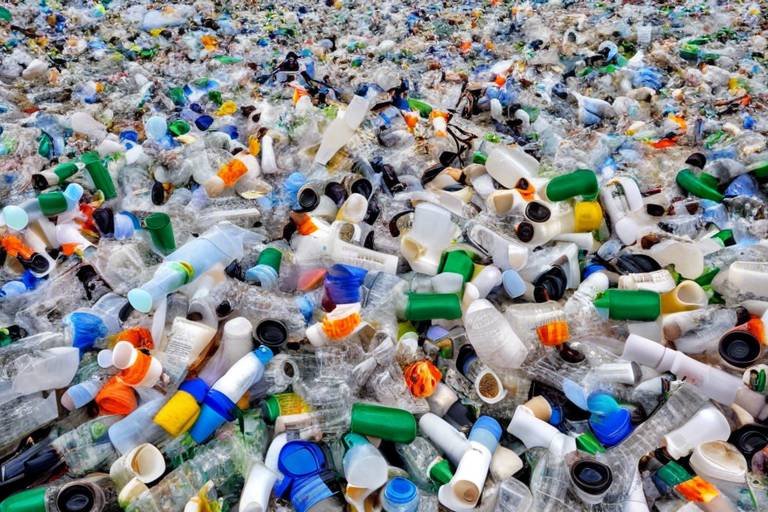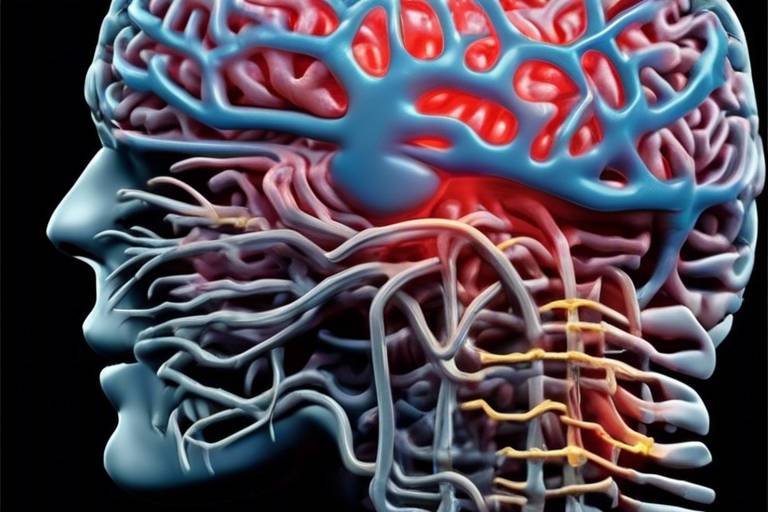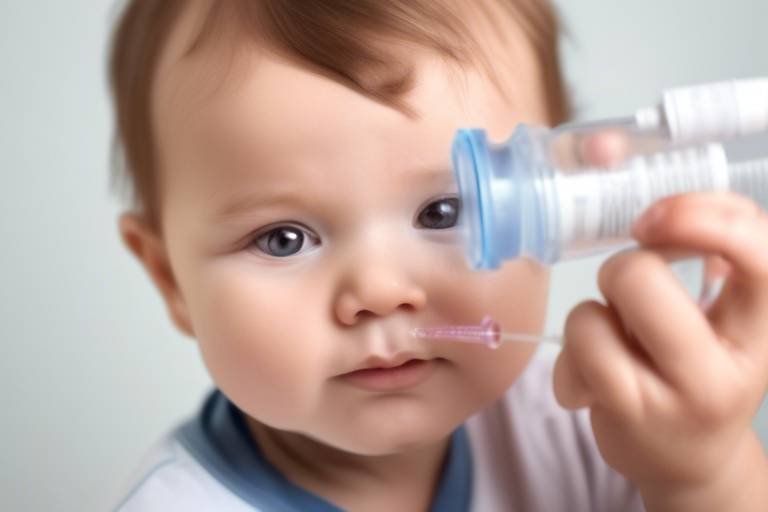How Science is Addressing the Plastic Waste Crisis
The plastic waste crisis is one of the most pressing environmental challenges of our time, and it’s not going away anytime soon. With millions of tons of plastic ending up in our oceans, landfills, and even our food chain, the urgency for effective solutions has never been greater. But what if I told you that science is stepping up to the plate, armed with innovative ideas and groundbreaking technologies? In this article, we’ll explore how scientists and researchers are tackling this colossal problem head-on, unveiling strategies that not only aim to reduce plastic pollution but also promote sustainability.
Imagine a world where plastic waste is no longer a threat to marine life or human health. It may sound like a distant dream, but the reality is that numerous scientific advancements are paving the way toward this vision. From biodegradable alternatives to advanced recycling technologies, the battle against plastic waste is gaining momentum. We’ll dive deep into these innovative approaches, discussing their implications and potential to reshape our relationship with plastic.
As we navigate through this article, we'll uncover the scale of plastic waste globally, explore the latest research on biodegradable materials, and examine how microbial solutions are revolutionizing waste management. We’ll also emphasize the importance of policy and community engagement in fostering a sustainable future. So, buckle up and get ready to discover how science is not just addressing the plastic waste crisis but is also leading us toward a cleaner, greener planet.
Understanding the magnitude of plastic waste generated globally is crucial. Did you know that, according to recent statistics, approximately 300 million tons of plastic are produced each year? A staggering 8 million tons of this plastic find their way into our oceans, wreaking havoc on marine ecosystems and wildlife. The sources of this plastic pollution are diverse, ranging from single-use plastics like bags and bottles to larger items such as fishing nets and industrial waste.
The environmental impact of plastic pollution is profound. Marine animals often mistake plastic for food, leading to ingestion and entanglement, which can result in injury or death. Furthermore, microplastics—tiny plastic particles that result from the breakdown of larger plastic items—have infiltrated our water supply and even our food chain, posing risks to human health. It’s a vicious cycle, and the need for effective solutions has never been more urgent.
In the quest for solutions, research into biodegradable materials is gaining momentum. Scientists are exploring various alternatives to traditional plastics that can break down naturally, reducing the burden on landfills and the environment. These biodegradable materials can be derived from natural sources, such as plants and organic matter, and they present a promising avenue for mitigating plastic waste.
Recent advancements in bioplastics are nothing short of revolutionary. These materials are designed to decompose more easily than conventional plastics, and they can be produced using renewable resources. For instance, bioplastics can be made from corn starch, sugarcane, or even waste products from food processing. By replacing petroleum-based plastics with bioplastics, we can significantly reduce our reliance on fossil fuels.
Plant-based plastics are emerging as a viable solution to the plastic waste crisis. They offer a range of benefits, including a lower carbon footprint and the potential for compostability. However, challenges such as production costs and scalability remain. As technology advances, the hope is that plant-based plastics can be integrated into various industries, from packaging to automotive components.
Compostable plastics present another avenue for waste reduction. These materials are designed to break down in composting environments, turning into nutrient-rich soil rather than lingering in landfills for centuries. Understanding their degradation processes is essential for effective waste management systems. By incorporating compostable plastics into our daily lives, we can contribute to a circular economy that values sustainability.
Innovative recycling technologies are transforming plastic waste management. Traditional recycling methods often fall short, with a significant portion of plastic waste ending up in landfills. However, new techniques, such as chemical recycling and advanced sorting technologies, are improving recycling efficiency and enabling the recovery of more plastics. These methods can break down plastics into their fundamental components, allowing them to be reused in new products.
Microorganisms are being harnessed to tackle plastic waste in astonishing ways. Scientists are discovering that certain bacteria and fungi have the ability to degrade plastics, offering a natural solution to this man-made problem. This section discusses the potential of these microorganisms and their implications for waste management practices.
Enzymatic processes are at the forefront of microbial solutions. Researchers are exploring how specific enzymes can break down plastics into harmless byproducts. This ongoing research holds promise for creating efficient waste management systems that leverage the power of nature to tackle plastic pollution.
Bioengineering offers exciting possibilities for enhancing microbial plastic degradation. By modifying microorganisms, scientists can improve their efficiency in breaking down plastics. This innovative approach could revolutionize waste management, allowing us to turn plastic waste into valuable resources.
Effective solutions to the plastic crisis require collaboration among scientists, policymakers, and communities. Policy initiatives play a crucial role in promoting sustainable practices and reducing plastic consumption. Community engagement is equally important, as it empowers individuals to make informed choices and advocate for change. Together, these efforts can create a powerful ripple effect in the fight against plastic pollution.
Looking ahead, emerging trends and future research directions in plastic waste management are essential for continued progress. The importance of innovation and collaboration cannot be overstated. By fostering a culture of sustainability and embracing new technologies, we can address this global challenge and pave the way for a cleaner, healthier planet.
- What are the main sources of plastic waste? The primary sources include single-use plastics, packaging materials, and industrial waste.
- How do biodegradable plastics differ from traditional plastics? Biodegradable plastics are designed to break down more easily in the environment, while traditional plastics can take hundreds of years to decompose.
- What role do microorganisms play in plastic waste management? Certain bacteria and fungi can naturally degrade plastics, offering a potential solution to plastic pollution.
- How can individuals contribute to reducing plastic waste? Individuals can reduce plastic waste by choosing reusable products, supporting sustainable brands, and participating in local clean-up efforts.

The Scale of Plastic Waste
Understanding the magnitude of plastic waste generated globally is crucial in our fight against environmental degradation. Did you know that, according to recent estimates, over 300 million tons of plastic are produced every year? That's equivalent to the weight of the entire human population! This staggering figure not only highlights the sheer volume of plastic we create but also emphasizes the urgent need for effective waste management solutions.
Plastic waste is pervasive, infiltrating every corner of our planet—from the deepest ocean trenches to the highest mountain peaks. In fact, it is estimated that around 8 million tons of plastic enter our oceans annually, causing devastating effects on marine ecosystems. Sea turtles mistake plastic bags for jellyfish, seabirds ingest plastic particles thinking they are food, and countless marine species are entangled in discarded fishing nets. The consequences of plastic pollution extend beyond wildlife; they also pose serious threats to human health, as microplastics have been found in drinking water and even in the air we breathe.
The sources of plastic waste are diverse, but they can generally be categorized into a few key areas:
- Single-use plastics: Items like straws, cutlery, and plastic bags contribute significantly to the problem, as they are often used briefly before being discarded.
- Packaging: The food and beverage industry is one of the largest producers of plastic waste, with packaging materials making up a substantial portion of the total waste generated.
- Textiles: Synthetic fibers from clothing, such as polyester and nylon, shed microplastics into the environment during washing.
To illustrate the impact of plastic waste, consider the following table that summarizes key statistics related to plastic pollution:
| Category | Annual Contribution (in tons) |
|---|---|
| Plastic Production | 300 million |
| Plastic Waste Entering Oceans | 8 million |
| Plastic Waste in Landfills | over 90 million |
| Microplastics in Drinking Water | estimated 10,000 particles per liter |
The environmental impact of plastic pollution is profound. It disrupts ecosystems, threatens wildlife, and even contributes to climate change through the release of greenhouse gases during the production and degradation processes. As plastic waste accumulates, it becomes increasingly clear that we must take action to address this crisis.
In conclusion, the scale of plastic waste is not just a statistic; it is a pressing global issue that requires immediate attention. By understanding the sources and impacts of plastic pollution, we can better equip ourselves to tackle this challenge head-on and work towards a more sustainable future.

Biodegradable Alternatives
As the world grapples with the overwhelming challenge of plastic waste, the search for has become a beacon of hope. Traditional plastics, while versatile and widely used, are notorious for their durability and resistance to natural degradation. This means that once they enter our environment, they can linger for hundreds of years, wreaking havoc on ecosystems and contributing to pollution. In contrast, biodegradable materials are designed to break down more easily, offering a sustainable solution to the plastic crisis.
Research into biodegradable materials is gaining momentum, with scientists and innovators exploring various options that can successfully replace conventional plastics. These alternatives not only aim to minimize environmental impact but also strive to maintain the functionality and convenience that plastics provide. Some of the most promising biodegradable alternatives include:
- Starch-based plastics: Derived from renewable resources like corn or potatoes, these materials can decompose under the right conditions, making them an eco-friendly option for packaging and disposable items.
- Polylactic Acid (PLA): This bioplastic is made from fermented plant starch, primarily from corn. PLA is not only biodegradable but also compostable, making it a popular choice for food packaging and utensils.
- Chitosan: Extracted from the shells of crustaceans, chitosan is a natural polymer that exhibits antimicrobial properties and can be used in various applications, from food preservation to medical supplies.
Despite their potential, biodegradable alternatives also face challenges. One major hurdle is the need for appropriate disposal conditions; many biodegradable materials require industrial composting facilities to break down effectively. In a typical landfill, where conditions are anaerobic and lack moisture, these materials may not decompose as intended. Thus, it is crucial to integrate these alternatives into existing waste management systems to ensure they fulfill their promise of sustainability.
Moreover, the production of biodegradable materials must also be environmentally friendly. The cultivation of crops for bioplastics can lead to land-use changes and increased pesticide use, which can have adverse effects on biodiversity and soil health. Therefore, it is essential to approach the development of biodegradable alternatives with a holistic perspective, considering not just their end-of-life impact but also their entire lifecycle.
In summary, the exploration of biodegradable alternatives is a vital step towards addressing the plastic waste crisis. By investing in research and development, we can pave the way for materials that not only reduce plastic pollution but also promote a more sustainable future. As we continue to innovate, it’s important to engage with communities and policymakers to create a supportive environment for these alternatives to thrive.
Q: What are biodegradable plastics made from?
A: Biodegradable plastics can be made from various natural materials, including plant starch, polylactic acid (PLA), and chitosan. These materials are designed to break down more easily than traditional plastics.
Q: How long does it take for biodegradable plastics to decompose?
A: The decomposition time for biodegradable plastics varies depending on the material and the conditions in which they are disposed of. In industrial composting facilities, some biodegradable plastics can break down in a few months, while in landfills, they may take several years.
Q: Can biodegradable plastics be recycled?
A: Recycling options for biodegradable plastics are limited. It's essential to check local recycling guidelines, as many recycling facilities do not accept biodegradable materials due to their different properties compared to conventional plastics.
Q: Are biodegradable plastics a complete solution to the plastic waste problem?
A: While biodegradable plastics offer a promising alternative, they are not a complete solution. It's crucial to reduce overall plastic consumption, improve waste management systems, and promote a circular economy to effectively tackle the plastic crisis.
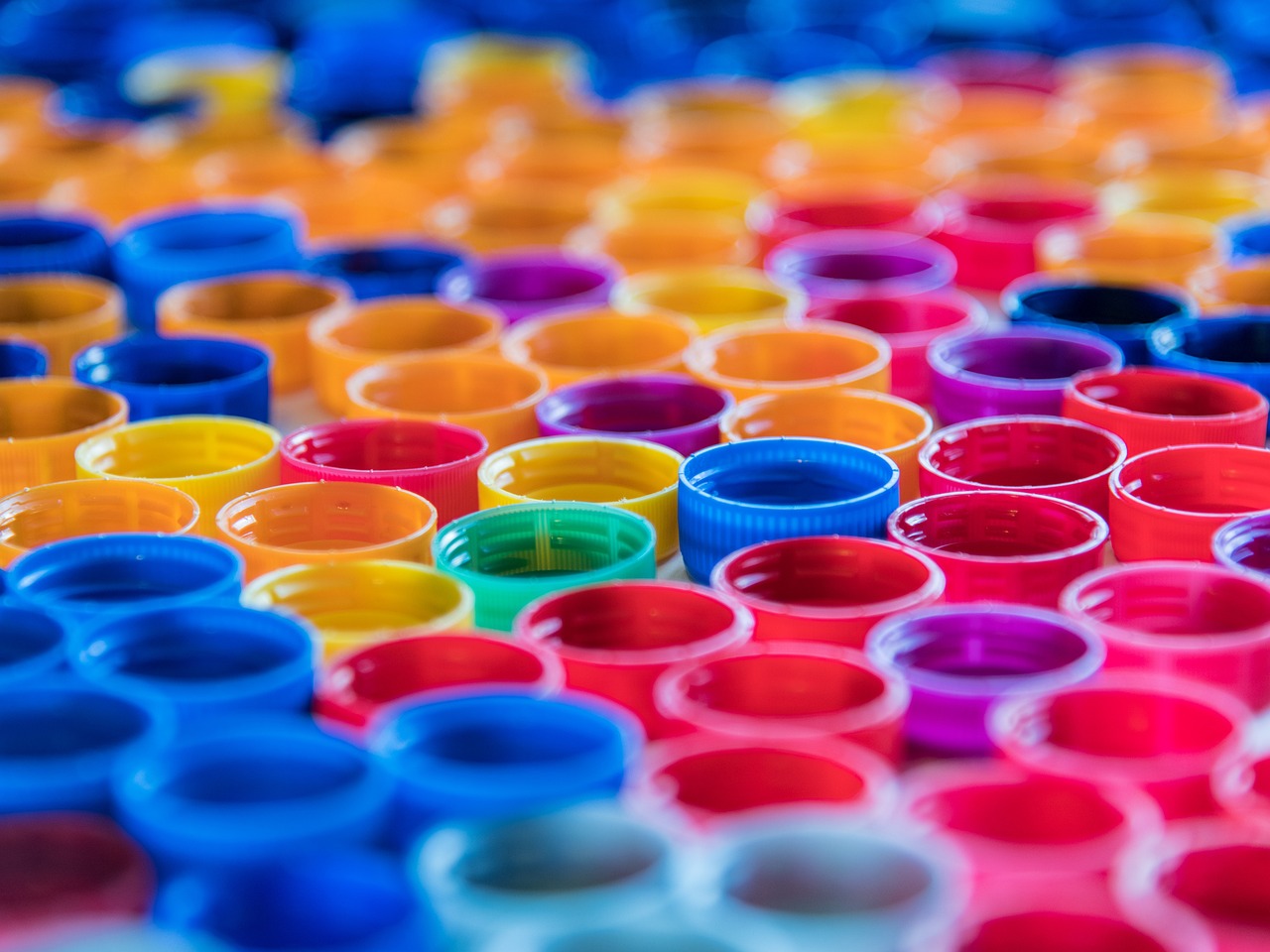
Innovations in Bioplastics
In recent years, the field of bioplastics has witnessed a remarkable transformation, driven by the urgent need to address the plastic waste crisis. Innovations in bioplastics are not just about creating an alternative to traditional plastics; they are about rethinking how we produce, use, and dispose of materials. With advancements in technology and a growing awareness of environmental issues, researchers and companies are developing bioplastics that not only perform well but also reduce our reliance on fossil fuels.
One of the most exciting aspects of bioplastics is their potential to be derived from renewable resources. Traditional plastics are typically made from petroleum, a non-renewable resource that contributes to greenhouse gas emissions. In contrast, bioplastics can be sourced from a variety of organic materials, such as corn starch, sugarcane, and even waste products from other industries. This shift not only minimizes environmental impact but also promotes a circular economy where materials are reused and recycled.
Among the innovations in bioplastics, polyhydroxyalkanoates (PHAs) stand out. These are a class of biodegradable plastics produced by microorganisms through fermentation processes. PHAs are not only biodegradable but can also be tailored to have specific properties, making them suitable for a wide range of applications—from packaging to medical devices. The versatility of PHAs makes them a game-changer in the quest for sustainable materials.
Moreover, researchers are exploring the use of nanotechnology to enhance the properties of bioplastics. By incorporating nanomaterials, such as cellulose nanofibers or clay nanoparticles, scientists can improve the strength, flexibility, and barrier properties of bioplastics. This means that bioplastics can be engineered to meet the demanding requirements of various industries, including food packaging and automotive parts.
However, the journey of bioplastics is not without challenges. One of the primary hurdles is the production cost. Currently, bioplastics can be more expensive to produce than their conventional counterparts, which can deter companies from making the switch. To address this, researchers are continuously working on optimizing production processes and scaling up manufacturing techniques. As the demand for sustainable alternatives grows, economies of scale may help bring down costs, making bioplastics a more attractive option for businesses.
Another area of innovation lies in the development of compostable bioplastics. These materials are designed to break down in industrial composting facilities, returning nutrients to the soil and reducing landfill waste. Companies are now focusing on creating compostable products that can replace single-use plastics, such as cutlery and plates, which often end up in oceans and landfills. The integration of compostable bioplastics into waste management systems is crucial for their success and acceptance in the market.
In conclusion, the innovations in bioplastics represent a beacon of hope in the fight against plastic pollution. With ongoing research and development, the potential for bioplastics to replace traditional plastics is becoming more viable every day. As we move forward, it is essential to support these innovations through policy initiatives and consumer choices that prioritize sustainability. Together, we can pave the way for a greener, cleaner future.
- What are bioplastics made from? Bioplastics are typically made from renewable resources such as corn starch, sugarcane, or even organic waste materials.
- Are bioplastics biodegradable? Many bioplastics are designed to be biodegradable, meaning they can break down into natural substances in the environment under the right conditions.
- How do bioplastics compare to traditional plastics? While traditional plastics are derived from fossil fuels and can take hundreds of years to decompose, bioplastics offer a more sustainable alternative that can reduce environmental impact.
- What are the challenges facing bioplastics? The main challenges include higher production costs and the need for proper waste management systems to ensure effective composting or recycling.

Plant-Based Plastics
Plant-based plastics are emerging as a promising solution to the plastic waste crisis that plagues our planet. Unlike traditional plastics, which are derived from fossil fuels, these innovative materials are made from renewable resources such as corn, sugarcane, and other plant materials. This shift not only reduces our reliance on non-renewable resources but also offers a pathway to lower carbon emissions during production. But what exactly makes plant-based plastics so appealing?
One of the most significant benefits of plant-based plastics is their potential to reduce environmental impact. When produced, they often emit fewer greenhouse gases compared to their petroleum-based counterparts. Additionally, these materials can be engineered to have similar properties to conventional plastics, making them suitable for a wide range of applications, from packaging to consumer goods. However, the road to widespread adoption is not without challenges.
For instance, the production of plant-based plastics can sometimes compete with food crops, raising concerns about food security and land use. Furthermore, the infrastructure for recycling these materials is still developing, which can lead to confusion among consumers about how to dispose of them properly. Despite these challenges, the potential for plant-based plastics to mitigate plastic waste is significant.
Recent advancements in technology are paving the way for more efficient production methods and better-performing plant-based plastics. For example, researchers are exploring ways to enhance the properties of these materials, making them more durable and versatile. This includes innovations in biopolymer chemistry and the use of additives that can improve the performance of plant-based plastics in various environments.
Moreover, the integration of plant-based plastics into existing waste management systems is crucial. While these materials can be compostable, it's essential to ensure that they are processed correctly to maximize their environmental benefits. This means developing education campaigns to inform the public about proper disposal methods and encouraging industries to adopt these sustainable alternatives.
In summary, plant-based plastics represent a significant step forward in our fight against plastic pollution. Their potential to reduce our carbon footprint and reliance on fossil fuels is undeniable. However, it will take a concerted effort from manufacturers, consumers, and policymakers to fully realize the benefits of these materials. As we continue to innovate and adapt, plant-based plastics may very well become a cornerstone of a more sustainable future.
- What are plant-based plastics made from? Plant-based plastics are primarily made from renewable resources such as corn, sugarcane, and other biomass.
- Are plant-based plastics biodegradable? Some plant-based plastics are designed to be biodegradable or compostable, but this depends on the specific type and the conditions under which they are disposed of.
- How do plant-based plastics compare to traditional plastics? Plant-based plastics can have similar properties to traditional plastics but are generally more environmentally friendly as they are derived from renewable resources.
- Can plant-based plastics be recycled? While some plant-based plastics can be recycled, the infrastructure for recycling them is still developing, which may lead to challenges in disposal.
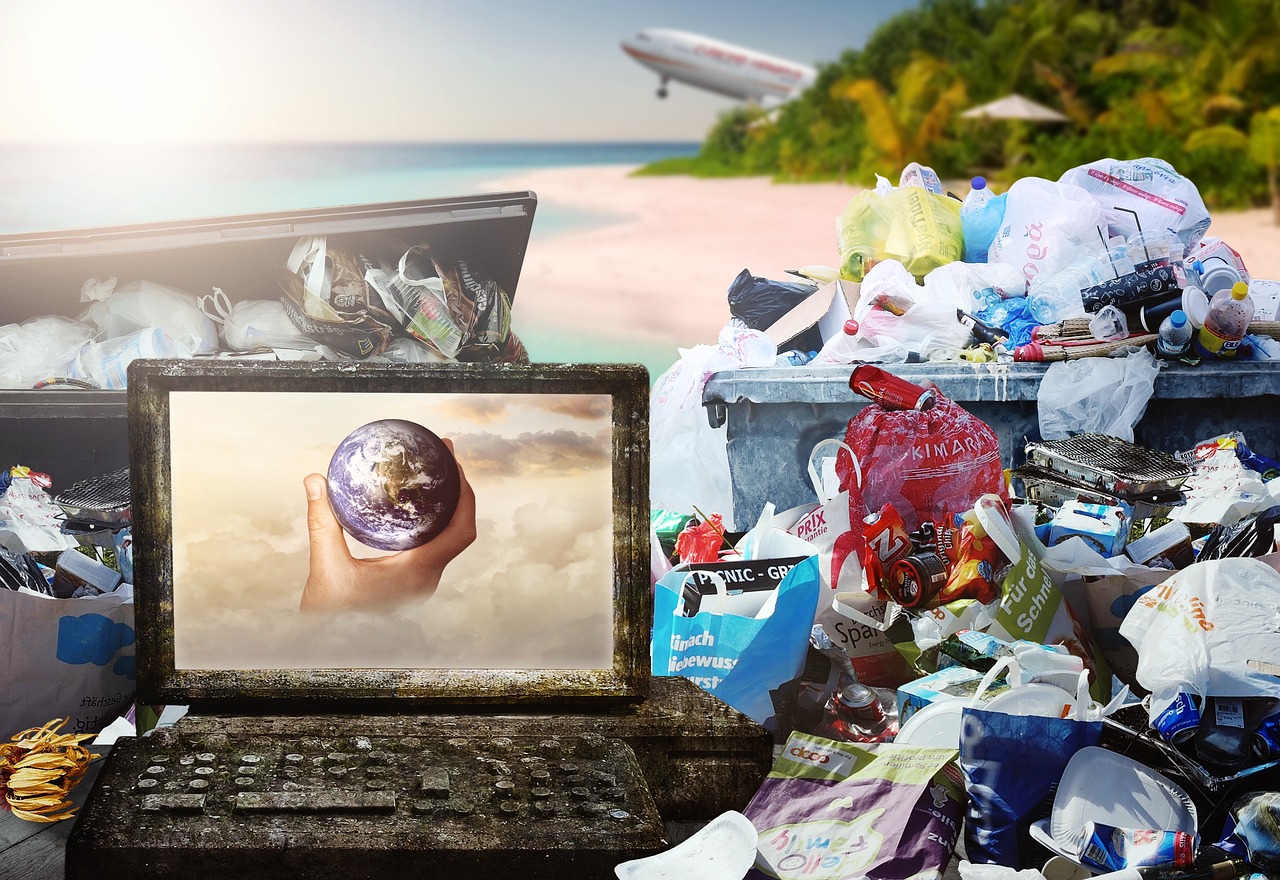
Compostable Plastics
Compostable plastics are emerging as a promising alternative to traditional plastic materials, providing a potential solution to the ever-growing plastic waste crisis. Unlike conventional plastics, which can take hundreds of years to decompose, compostable plastics are designed to break down into natural substances within a relatively short time frame, typically within a few months under the right conditions. This characteristic makes them an attractive option for reducing the volume of plastic waste that ends up in landfills and oceans.
The primary advantage of compostable plastics lies in their ability to decompose into non-toxic components, such as carbon dioxide, water, and biomass, when exposed to the right environmental conditions. However, it's essential to understand that not all compostable plastics are created equal. They can be broadly categorized into two types: those that can break down in industrial composting facilities and those designed for home composting. The former typically requires higher temperatures and specific conditions to decompose effectively, while the latter can break down in a more typical backyard compost setup.
One of the challenges facing compostable plastics is the need for proper waste management systems to ensure they are disposed of correctly. For instance, if compostable plastics end up in regular recycling streams, they can contaminate the recycling process, leading to more harm than good. Therefore, public awareness and education about the correct disposal of these materials are crucial. Communities must develop clear guidelines on how to handle compostable plastics to maximize their environmental benefits.
Furthermore, the production of compostable plastics often involves the use of renewable resources, such as cornstarch or sugarcane, which can help reduce our reliance on fossil fuels. However, it's vital to consider the entire lifecycle of these materials, from production to disposal. For example, the agricultural practices involved in growing the crops used for compostable plastics can have significant environmental impacts, including land use changes and pesticide applications.
In summary, compostable plastics hold great promise in the fight against plastic pollution, but they are not a silver bullet. To harness their full potential, we must ensure that they are integrated into effective waste management systems, accompanied by public education initiatives. This approach can pave the way for a more sustainable future, where plastic waste is managed responsibly, and our ecosystems are protected.
- What are compostable plastics made from? Compostable plastics are typically made from renewable resources such as cornstarch, sugarcane, or other plant materials.
- How long does it take for compostable plastics to decompose? Depending on the conditions, compostable plastics can break down within a few months in industrial composting facilities and may take longer in home composting systems.
- Can compostable plastics be recycled? No, compostable plastics should not be placed in regular recycling streams, as they can contaminate the recycling process.
- What should I do with compostable plastics? Compostable plastics should be disposed of in composting facilities or home compost systems, following local guidelines for proper disposal.
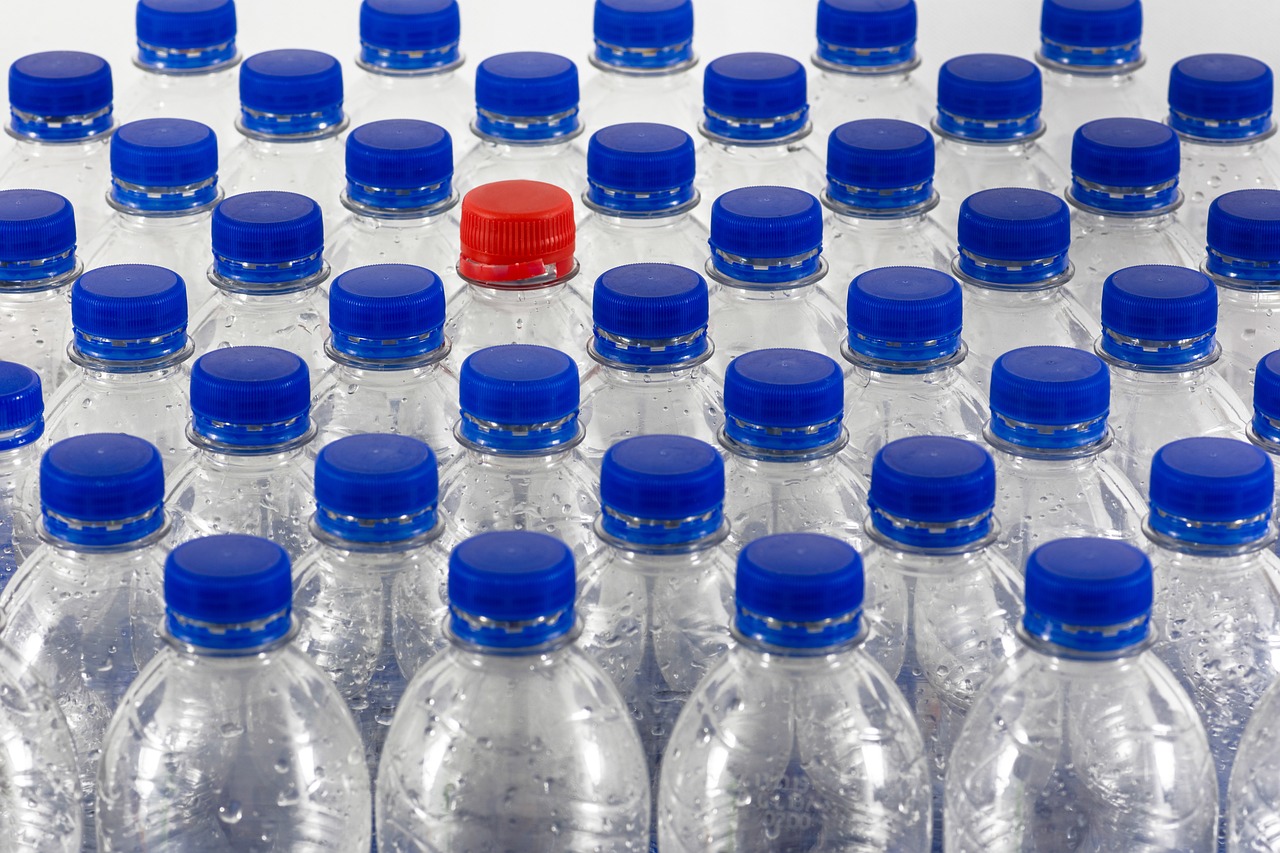
Advanced Recycling Technologies
As the world grapples with the escalating plastic waste crisis, are emerging as a beacon of hope. These innovative methods not only aim to improve the efficiency of recycling processes but also strive to minimize the volume of plastic waste that ultimately ends up in landfills. Traditional recycling methods often face challenges such as contamination and the degradation of plastic quality over time. However, advanced technologies are revolutionizing how we think about recycling, making it more effective and sustainable.
One of the most exciting developments in this field is chemical recycling. Unlike mechanical recycling, which involves melting down plastics and reforming them, chemical recycling breaks down plastics into their original monomers. This process allows for the creation of virgin-quality plastics from recycled materials, thereby closing the loop and significantly reducing the need for new plastic production. Imagine being able to turn your old plastic bottles back into brand-new bottles without losing any quality—this is the promise of chemical recycling.
Another groundbreaking technology is pyrolysis. This method involves heating plastic waste in the absence of oxygen, which breaks it down into oil and gas. The resulting products can be used to produce new plastics or even as fuel. Pyrolysis not only diverts plastic waste from landfills but also provides a viable alternative to fossil fuels. However, while this technology is promising, it does require careful management to minimize emissions and ensure that the process is environmentally friendly.
To illustrate the effectiveness of these advanced recycling methods, consider the following table that compares traditional recycling with advanced techniques:
| Aspect | Traditional Recycling | Advanced Recycling |
|---|---|---|
| Quality of Recycled Material | Degrades over time | Virgin-quality possible |
| Contamination Handling | Limited effectiveness | More resilient to contamination |
| Types of Plastics Processed | Limited variety | Wider range of plastics |
| Environmental Impact | Higher emissions | Lower emissions with proper management |
Moreover, advancements in sorting technologies are also pivotal. With the integration of artificial intelligence and machine learning, recycling facilities can now identify and sort different types of plastics with remarkable accuracy. This not only enhances the efficiency of the recycling process but also increases the quality of the final recycled product. Imagine a future where machines can sort plastics faster and more accurately than humans, leading to better recycling outcomes and reduced contamination rates.
In addition to these technologies, biological recycling is gaining traction. This innovative approach utilizes microorganisms to break down plastics into simpler, less harmful substances. Research is ongoing to identify and optimize specific bacteria and fungi that can effectively degrade plastics, offering a natural solution to the plastic waste problem. The potential of biological recycling is immense, as it could complement existing recycling methods and provide a sustainable way to manage plastic waste.
In summary, the landscape of recycling is evolving rapidly. With the advent of advanced recycling technologies, we are moving towards a more sustainable future where plastic waste can be effectively managed and repurposed. By embracing these innovations and investing in research and development, we can pave the way for a cleaner environment and a more responsible approach to plastic consumption.
- What is chemical recycling? Chemical recycling breaks down plastics into their original monomers, allowing for the production of virgin-quality plastics from recycled materials.
- How does pyrolysis work? Pyrolysis involves heating plastic waste in the absence of oxygen, converting it into oil and gas that can be used to produce new plastics or as fuel.
- What are the benefits of advanced recycling technologies? These technologies improve the quality of recycled materials, handle contamination better, and process a wider variety of plastics compared to traditional methods.
- How can biological recycling contribute to waste management? Biological recycling uses microorganisms to break down plastics, offering a natural and potentially sustainable solution to plastic waste.

Microbial Solutions
In the battle against plastic waste, are emerging as a beacon of hope. Microorganisms, including bacteria and fungi, possess an astonishing ability to break down various forms of plastic, which presents an innovative approach to mitigating the plastic crisis. Imagine tiny soldiers—bacteria and fungi—working tirelessly to decompose the very materials that are choking our planet. This section dives deep into how these microorganisms can be harnessed to tackle one of the most pressing environmental issues of our time.
Research indicates that certain microbes have evolved mechanisms to metabolize plastics, effectively turning them into harmless byproducts. For instance, a groundbreaking study revealed that a specific strain of bacteria, Ideonella sakaiensis, can break down PET (polyethylene terephthalate), a common plastic found in bottles and containers. This discovery is akin to finding a needle in a haystack, as it opens the door to new waste management practices that could revolutionize how we handle plastic waste.
Furthermore, the implications of utilizing microbial solutions extend beyond just breaking down plastics. By understanding the degradation processes, scientists can develop biotechnological applications that enhance plastic waste management systems. For instance, imagine a future where waste treatment facilities employ engineered microbes that can efficiently digest plastics, significantly reducing the volume of waste entering landfills. This not only helps in waste reduction but also minimizes the environmental footprint of plastic production and disposal.
However, the journey to effectively implement microbial solutions is not without its challenges. Factors such as the variety of plastics, the environmental conditions required for microbial growth, and the scale of application all play critical roles in determining the feasibility of these solutions. To address these challenges, ongoing research is crucial. Scientists are exploring various avenues, including:
- Enzymatic Plastic Degradation: Investigating specific enzymes produced by microbes that can accelerate the breakdown of plastics.
- Bioengineering Microbes: Modifying microorganisms to enhance their plastic degradation capabilities, making them more efficient in diverse environments.
- Understanding Microbial Communities: Studying how different microbes interact and work together to degrade plastics, which could lead to synergistic effects that improve overall efficiency.
Ultimately, the integration of microbial solutions into waste management strategies holds great promise. As we continue to explore and innovate in this field, we may find ourselves on the brink of a new era where plastics are no longer a persistent problem but rather a resource that can be recycled back into the ecosystem. The potential for these microbial interventions is vast, and they could play a pivotal role in creating a more sustainable future.
Q: What types of plastics can microbes degrade?
A: Certain microbes can degrade a variety of plastics, including PET, polystyrene, and polyurethane. However, research is ongoing to identify more plastics that can be broken down effectively.
Q: How long does it take for microbes to degrade plastic?
A: The time required for microbial degradation varies depending on the type of plastic and environmental conditions. Some plastics can take several months to years to break down, while others may degrade more quickly under optimal conditions.
Q: Are there any risks associated with using microbes for plastic degradation?
A: While microbial solutions offer promising benefits, there are concerns regarding the potential release of genetically modified organisms into the environment. Careful monitoring and regulation are essential to mitigate any risks.
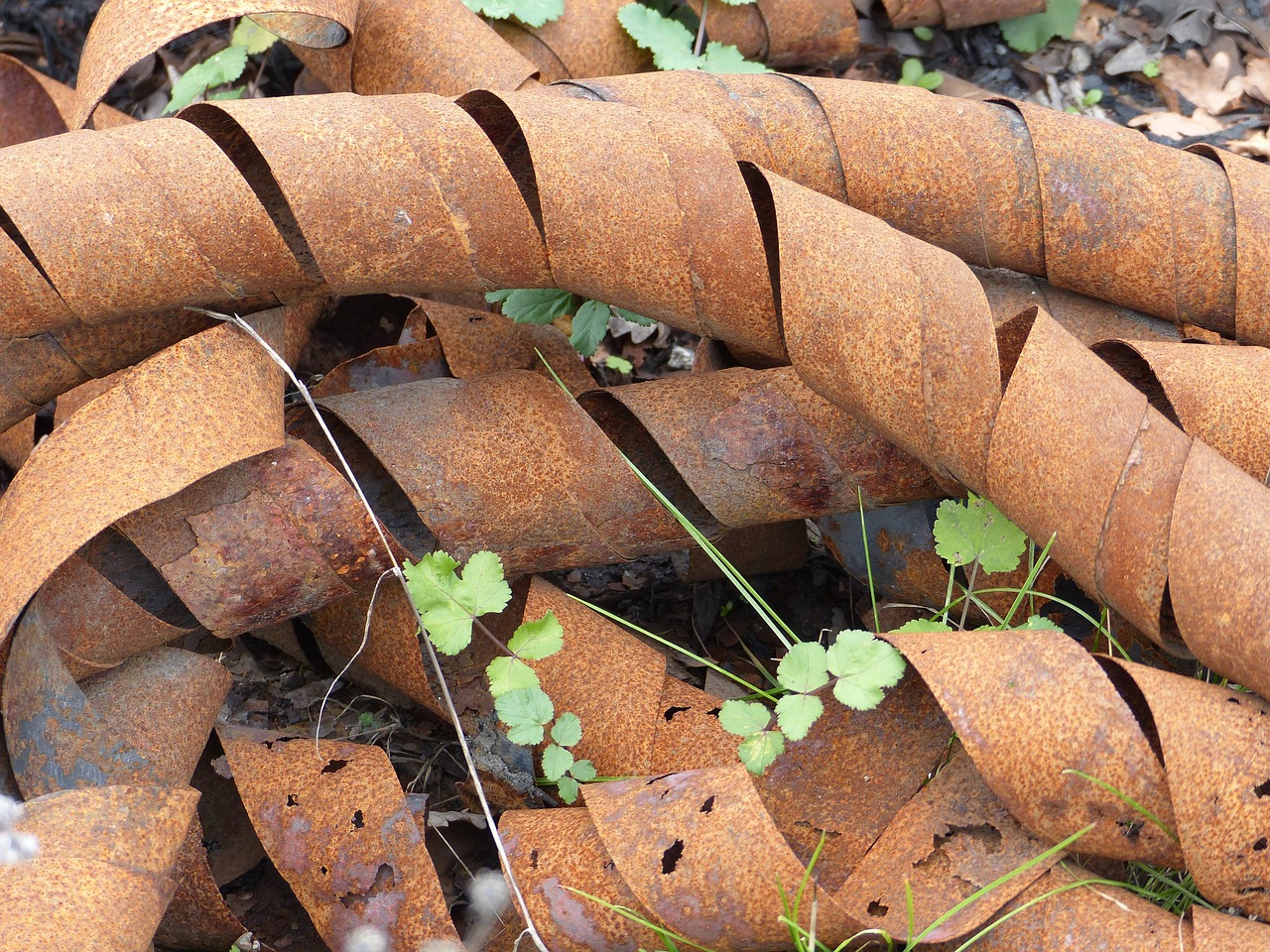
Enzymatic Plastic Degradation
In the quest to combat the plastic waste crisis, one of the most promising avenues of research is . This innovative approach harnesses the power of specific enzymes that can break down plastic materials, effectively transforming them into less harmful substances. Imagine a tiny molecular machine, working tirelessly to dismantle the stubborn bonds of plastic, much like a skilled craftsman disassembling a complex puzzle. This process not only offers a potential solution to reducing plastic waste but also opens up new possibilities for recycling and repurposing materials that would otherwise linger in landfills for centuries.
At the heart of enzymatic plastic degradation are enzymes, which are biological catalysts that speed up chemical reactions. Researchers have identified various types of enzymes capable of degrading different kinds of plastics, such as polyethylene terephthalate (PET) and polystyrene. For instance, a groundbreaking study discovered a bacterium called Ideonella sakaiensis, which produces an enzyme known as PETase. This enzyme can break down PET, commonly found in plastic bottles, into its basic building blocks. The sheer potential of this discovery is akin to finding a key that unlocks a door to a cleaner, more sustainable future.
However, the journey towards practical applications is fraught with challenges. While the concept of using enzymes to degrade plastics is exhilarating, the efficiency and speed of these processes need significant improvement. Currently, the degradation rates can be slow, taking several days or even weeks to break down plastic. Researchers are tirelessly working to enhance the performance of these enzymes through various methods, including:
- Protein engineering: Modifying the structure of enzymes to improve their activity and stability.
- Optimizing conditions: Finding the ideal temperature, pH, and environment for maximum enzyme efficiency.
- Combining enzymes: Using a cocktail of different enzymes to tackle various types of plastics simultaneously.
Furthermore, the integration of enzymatic degradation into existing waste management systems poses another layer of complexity. For these enzymes to be effective on a large scale, they need to be incorporated into recycling facilities and waste treatment plants. This requires collaboration between scientists, policymakers, and industry stakeholders to create a framework that supports the adoption of these technologies.
As we look to the future, the potential of enzymatic plastic degradation is vast. It could revolutionize how we approach plastic waste management, offering a more sustainable and efficient alternative to traditional recycling methods. Moreover, as research progresses and technology improves, we might witness a world where plastic waste is not just a problem, but a resource that can be transformed and reused. The question remains: will we embrace this opportunity to innovate and change our relationship with plastic?
Q: What types of plastics can enzymes break down?
A: Enzymes have been found to effectively degrade various plastics, particularly polyethylene terephthalate (PET) and polystyrene. Ongoing research is exploring the degradation of other plastic types as well.
Q: How long does the enzymatic degradation process take?
A: Currently, enzymatic degradation can take several days to weeks, depending on the type of plastic and the specific enzyme used. Researchers are working to enhance the speed and efficiency of these processes.
Q: Can enzymatic degradation be implemented in existing recycling systems?
A: While it is possible, integrating enzymatic degradation into current waste management systems requires collaboration among scientists, policymakers, and industry leaders to develop the necessary infrastructure and support.

Bioengineering Microbes
In the quest to tackle the plastic waste crisis, has emerged as a groundbreaking approach. Imagine tiny organisms, such as bacteria and fungi, being modified at the genetic level to enhance their natural abilities to break down plastics. This isn't just science fiction; it's happening right now in laboratories around the world! The potential to harness these microorganisms could revolutionize how we manage plastic waste.
One of the most exciting aspects of bioengineering is the ability to tailor microbes to target specific types of plastics. For instance, certain plastics like PET (polyethylene terephthalate), commonly found in water bottles, can be particularly stubborn in the environment. Researchers are now working on genetically modifying bacteria to produce enzymes that can effectively degrade PET into harmless byproducts. This process not only reduces plastic waste but also recycles it into usable materials, creating a circular economy.
Moreover, the implications of these advancements are vast. By engineering microbes to consume plastics, we could significantly reduce the burden on landfills and lessen the environmental impact of plastic pollution. Imagine a future where waste management facilities deploy these specially engineered microbes to digest plastic waste, transforming it into energy or raw materials. This could lead to a substantial decrease in the volume of plastic that ends up in oceans and landfills, paving the way for a cleaner planet.
However, the journey of bioengineering microbes is not without challenges. The safety and ecological impact of releasing genetically modified organisms into the environment must be carefully considered. Scientists are conducting extensive research to ensure that these engineered microbes do not disrupt existing ecosystems or pose risks to human health. Regulatory frameworks are also being developed to guide the safe application of these technologies.
In summary, bioengineering microbes presents a promising solution to the plastic waste problem, combining innovation with sustainability. As we continue to explore the potential of these tiny powerhouses, we must remain vigilant about their implications and ensure that their deployment is responsible and safe. The future of plastic waste management could very well depend on the microscopic heroes we are beginning to engineer.
- What are bioengineered microbes? Bioengineered microbes are microorganisms that have been genetically modified to enhance their ability to perform specific tasks, such as breaking down plastics.
- How do these microbes help with plastic waste? They can be engineered to produce enzymes that effectively degrade various types of plastics, turning them into harmless byproducts.
- Are there any risks associated with using genetically modified organisms? Yes, there are potential risks, including ecological disruption and health concerns, which require careful study and regulation.
- What types of plastics can be degraded by these engineered microbes? Currently, research focuses on plastics like PET, polystyrene, and polyethylene, among others.
- How far along is the research in this field? Research is ongoing, with promising results, but large-scale application is still in development.

Policy and Community Engagement
When it comes to tackling the plastic waste crisis, are not just important—they're absolutely essential. Imagine trying to build a house without a solid foundation; that's what addressing plastic pollution without these elements would be like. Governments, organizations, and individuals must come together to create effective strategies that not only reduce plastic usage but also promote sustainable practices across all sectors of society.
One of the most effective ways to foster this collaboration is through policy initiatives. These can include regulations that limit the production and distribution of single-use plastics, incentives for companies to adopt biodegradable alternatives, and support for research and development in sustainable materials. For instance, countries like Canada and the European Union have already implemented bans on certain types of single-use plastics, setting a precedent for others to follow. Such policies not only send a clear message about the seriousness of the issue but also encourage innovation in sustainable practices.
However, policies alone won't solve the problem. Community engagement plays a crucial role in ensuring that these policies are effective and embraced by the public. When communities are involved in the decision-making process, they are more likely to support and adhere to new regulations. This can be achieved through:
- Awareness Campaigns: Informing the public about the dangers of plastic pollution and the benefits of reducing plastic use.
- Local Clean-Up Initiatives: Organizing events that encourage community members to clean up local parks, beaches, and neighborhoods, fostering a sense of ownership and responsibility for their environment.
- Educational Programs: Implementing programs in schools and community centers that teach about sustainability and the importance of reducing plastic waste.
Engaging local businesses is also crucial. By collaborating with local entrepreneurs and companies, communities can develop and promote sustainable alternatives to plastic. For instance, farmers' markets often encourage the use of reusable bags and containers, which not only reduces plastic waste but also supports local economies. Additionally, businesses can be incentivized to adopt eco-friendly practices through tax breaks or grants, creating a win-win situation for both the environment and the economy.
As we look to the future, the importance of policy and community engagement in addressing the plastic waste crisis cannot be overstated. It’s about creating a culture of sustainability where everyone plays a part. Whether it’s through advocating for better policies or participating in local initiatives, every action counts. By working together, we can turn the tide on plastic pollution and pave the way for a cleaner, healthier planet.
Q: How can individuals contribute to reducing plastic waste?
A: Individuals can reduce plastic waste by using reusable bags, bottles, and containers, avoiding single-use products, and participating in local clean-up events.
Q: What role do businesses play in combating plastic pollution?
A: Businesses can adopt sustainable practices, offer eco-friendly products, and collaborate with communities to reduce plastic waste effectively.
Q: Are there any successful examples of policies addressing plastic waste?
A: Yes, countries like Canada and the EU have implemented bans on certain single-use plastics, which have led to a decrease in plastic consumption and increased awareness about the issue.
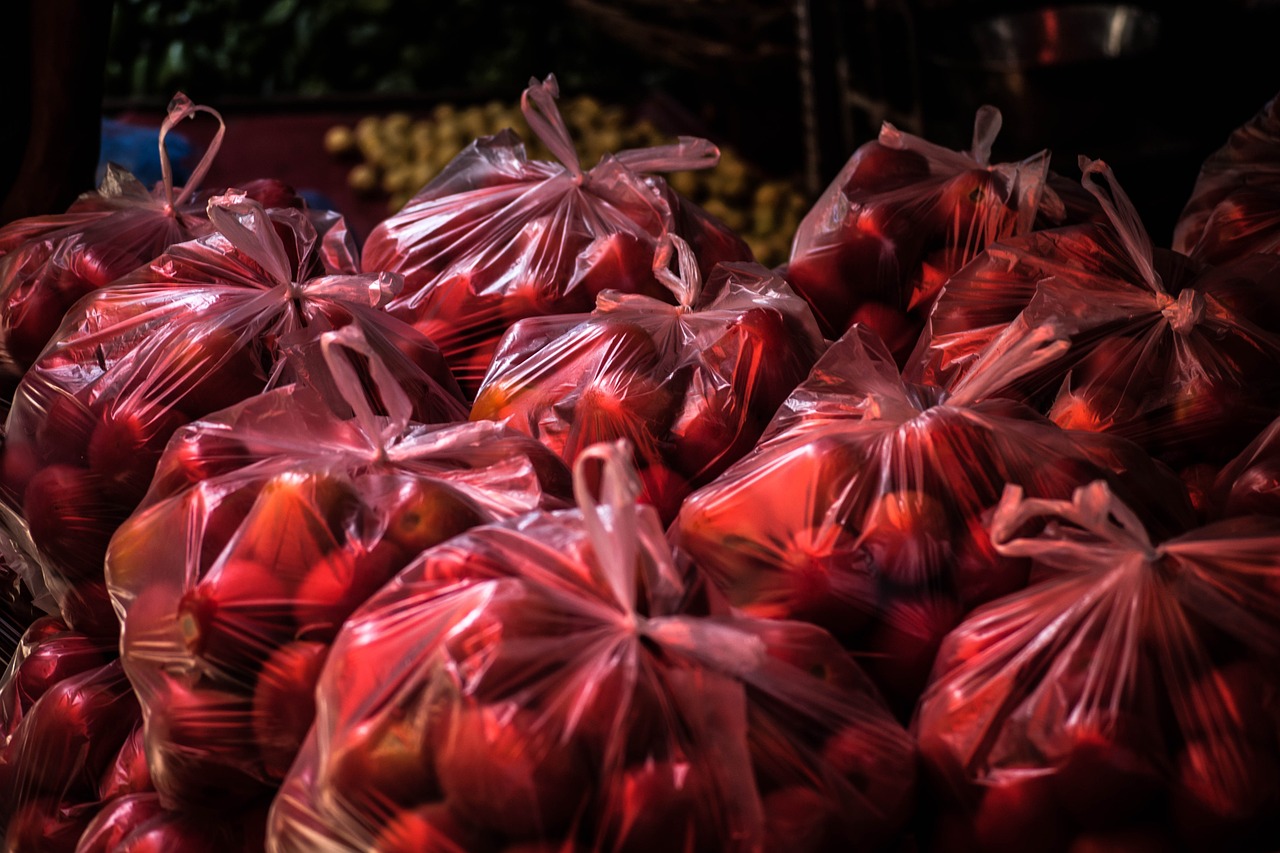
Future Directions in Plastic Waste Management
The journey towards effective plastic waste management is far from over; in fact, it's just beginning. As we look to the future, several key trends and innovations are emerging that promise to reshape our approach to plastic pollution. One of the most exciting developments is the rise of **circular economy** principles, which aim to keep materials in use for as long as possible. Imagine a world where plastic is not just discarded but continuously recycled, remade, and reused. This shift in mindset could dramatically reduce the demand for new plastic production and minimize waste.
Additionally, advancements in **smart waste management technologies** are paving the way for more efficient and effective recycling processes. For instance, the integration of **IoT (Internet of Things)** devices in waste collection can optimize routes and schedules, ensuring that recyclables are collected promptly and efficiently. These technologies not only reduce operational costs but also enhance the overall effectiveness of recycling programs. Furthermore, artificial intelligence is being harnessed to improve sorting processes at recycling facilities, allowing for better separation of plastics based on their types and grades, which ultimately increases the quality of recycled materials.
Moreover, **education and community engagement** are becoming increasingly important in the fight against plastic waste. Initiatives that raise awareness about the impact of plastic pollution and promote sustainable practices are vital. For example, community-led clean-up events and educational workshops can empower individuals to take action and make informed choices about their plastic consumption. As people become more aware of their environmental footprint, they are more likely to support policies and practices that prioritize sustainability.
Another promising direction is the development of **new materials** that can replace conventional plastics. Researchers are exploring alternatives made from natural sources that not only serve the same functions as plastics but also have minimal environmental impact. These innovations could revolutionize industries ranging from packaging to consumer goods. For instance, the use of **mycelium** (the root structure of mushrooms) as a packaging material is gaining traction, offering a biodegradable option that could significantly reduce plastic waste.
To illustrate the potential impact of these innovations, consider the following table that outlines some of the emerging technologies and their expected contributions to plastic waste management:
| Technology | Description | Potential Impact |
|---|---|---|
| Circular Economy | Systematic reuse and recycling of materials | Reduces demand for new plastics and minimizes waste |
| Smart Waste Management | Use of IoT for efficient waste collection | Optimizes recycling processes and reduces costs |
| AI Sorting Technologies | Enhanced sorting of recyclables using AI | Improves recycling quality and efficiency |
| Biodegradable Alternatives | Development of new materials from natural sources | Reduces reliance on conventional plastics |
In conclusion, the future of plastic waste management lies in a multi-faceted approach that combines technology, community engagement, and innovative materials. As we continue to explore these avenues, it is crucial for stakeholders—governments, businesses, and individuals—to collaborate and share knowledge. By doing so, we can create a sustainable future where plastic waste is minimized, and our environment is preserved for generations to come.
- What is a circular economy? A circular economy is an economic system aimed at eliminating waste and the continual use of resources by creating closed-loop systems where waste is minimized, and materials are reused.
- How can technology help in managing plastic waste? Technologies like IoT and AI can optimize waste collection and improve recycling processes, making them more efficient and effective.
- What are biodegradable alternatives to plastics? Biodegradable alternatives are materials that can break down naturally in the environment, reducing the impact of plastic waste.
- Why is community engagement important? Community engagement raises awareness about plastic pollution and encourages individuals to adopt sustainable practices, making a collective impact.
Frequently Asked Questions
- What is the scale of the plastic waste crisis?
The plastic waste crisis is staggering, with millions of tons of plastic entering our oceans and landfills each year. It's estimated that over 300 million tons of plastic are produced globally annually, and a significant portion of that ends up as waste, impacting ecosystems and human health.
- Are there biodegradable alternatives to traditional plastics?
Absolutely! Researchers are actively developing biodegradable materials that can break down more easily in the environment. These alternatives include bioplastics made from natural sources, which hold great promise for reducing our reliance on conventional plastics.
- How do bioplastics differ from regular plastics?
Bioplastics are derived from renewable biomass sources, such as plants, whereas traditional plastics are typically made from fossil fuels. This means that bioplastics can potentially reduce carbon footprints and are designed to decompose more efficiently, contributing to a cleaner environment.
- What are compostable plastics, and how do they work?
Compostable plastics are designed to break down in composting environments, turning into organic matter. They require specific conditions to decompose fully, which can be achieved in industrial composting facilities. This process helps divert waste from landfills and enriches soil.
- What innovations are being made in recycling technologies?
Innovative recycling technologies are making waves in how we manage plastic waste. New methods, such as advanced sorting systems and chemical recycling, are improving efficiency and enabling the recycling of plastics that were previously deemed non-recyclable.
- Can microorganisms help reduce plastic waste?
Yes! Scientists are exploring the potential of bacteria and fungi to degrade plastics. Certain microorganisms possess enzymes that can break down plastic materials, offering a natural solution to tackle plastic pollution.
- What is enzymatic plastic degradation?
Enzymatic plastic degradation involves using specific enzymes to break down plastic polymers into smaller, more manageable components. This process is at the forefront of research, providing a promising avenue for reducing plastic waste through biological means.
- How can communities engage in reducing plastic waste?
Community engagement is vital! Local initiatives, educational programs, and policy changes can empower individuals to reduce plastic consumption. Simple actions like organizing clean-up drives or promoting reusable products can make a significant impact.
- What are the future directions in plastic waste management?
The future looks promising with emerging trends in innovative materials, improved recycling methods, and enhanced community involvement. Ongoing research and collaboration among scientists, policymakers, and the public are crucial for addressing the plastic waste crisis effectively.

